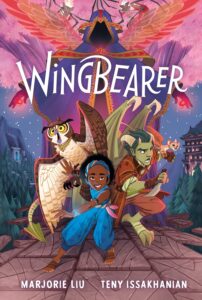The Guardian’s Gambit (The Felinity Chronicles Book 1) by JR Konkol
Black Rose Publishing, 2024
ISBN: 9781685135058
Available: Paperback, Kindle edition
Buy: Bookshop.org | Amazon.com
A superbly enthralling fantasy tale of cats, magic, and alternate dimensions, The Guardian’s Gambit is an absolute must-read. It’s the best animal-centered story I’ve read since Tad Williams’s Tailchaser’s Song came out all those years ago. Fantasy fans, you do not want to miss this one.
The story is told in third person, with the reader getting the thoughts of four cats: Gaius, Ajax, Loki, and Shaman. It’s clear from the writing the author knows cats very well: he has all their typical mannerisms and actions down perfectly. Where the story excels is in how he incorporates these into the fantasy elements of the story. For example, we all know cats sleep a great deal. In the book, when asleep, they enter the Dreaming, an alternate reality loosely based on the mundane world, where most of the story takes place. It’s a fascinating place of magic and horrible monsters, where the cats fight to the last claw to preserve their own reality. The enemies in the Dreaming are legion, from amped-up coyotes to giant mutant spiders. There’s a good deal of world building involved, complete with many cat-centric terms invented for the story. The author deserves credit for weaving them into the narrative in a way that avoids reader confusion, dropping little reminders when needed. It’s a sprawling but tightly-written story that’s impossible to avoid getting pulled into.
With a great storyline, you need great characters that the readers will be invested in, and Gaius, Ajax, Loki, and Shaman certainly fit the bill. They have differing personalities, physical abilities and magic powers that complement each other and strengthen the group as a whole. Gaius is the leader and thinker, Ajax the muscle, and Loki the clever one, while Shaman’s abilities as a magician develop over the course of the tale (tail?), and are one of the central tenets of the story. There’s also a strong supporting cast of other cats and ghosts, who help, and sometimes hinder, the four companions. There’s plenty of excitement, but also genuine emotional heft to some scenes. Loki’s entrapment is enough to cause reader panic, and his pondering on the merits of being a warrior at the expense of a normal life is genuinely touching. The protagonists pull you in hard, and reader emotions will ride up and down with them as they face myriad dangers.
Bottom line: for fantasy readers, this is a “do NOT miss”, and one of the best of 2024. Highly recommended.
Reviewed by Murray Samuelson







Follow Us!